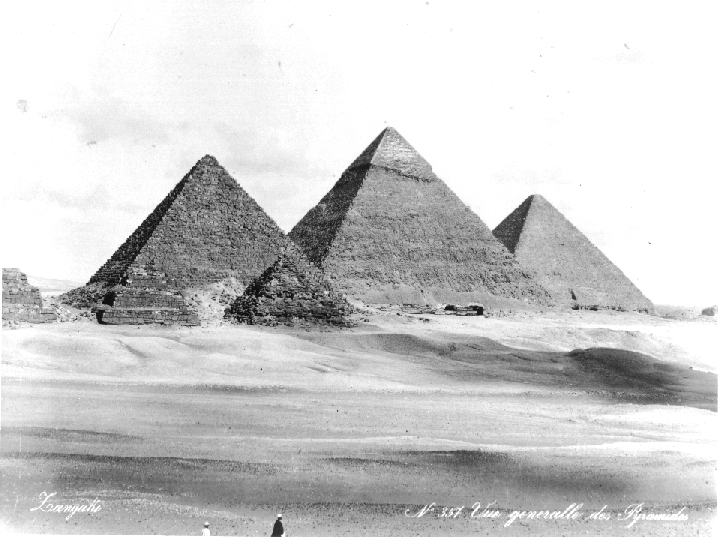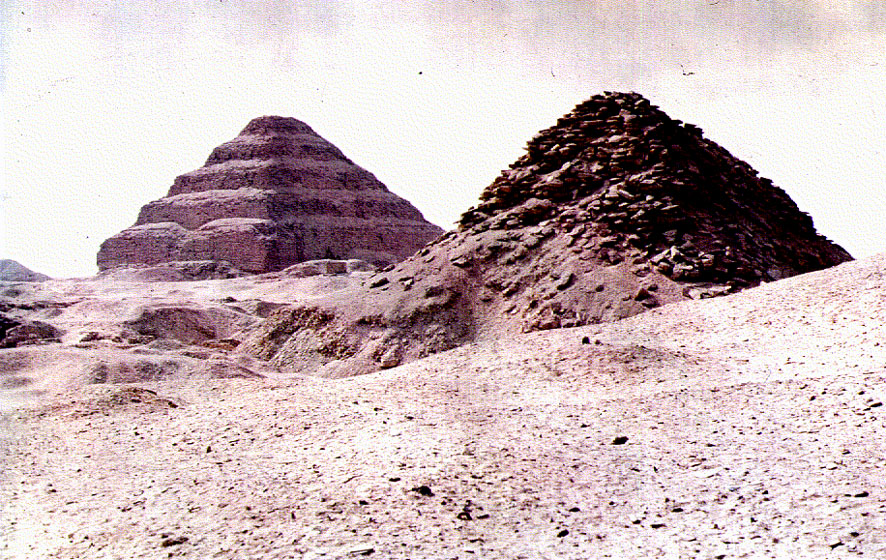 The pyramids.
The pyramids. The pyramids.
The pyramids.Pyramids are often described as mysterious structures, but their main purpose is not at all mysterious and is in no doubt. They were monumental tombs built for Egyptian kings who were buried in burial chambers inside or under the pyramids. It is important to remember that there were other building connected with these pyramids, such as temples.
The earliest pyramid, of king Djoser, was not a "proper" pyramid with smooth sides, but rather a stepped building. It was built around 2610 BC, so when Ipi and Meryt visited it the pyramid was already nearly 1300 years old! Real pyramids began to be made around 2570 BC.
 When Ipi and Meryt stood next to the east side of the Step Pyramid of Djoser, they could see
three large pyramids on the northern horizon which nowadays are known as the
pyramids of Abusir (pronounced "Aboo-seer", with the stress on the second syllable), after the
name of the village nearby. Archaeologists have established
that these pyramids belong to kings Sahure, Neferirkare and Neuserre.
When Ipi and Meryt stood next to the east side of the Step Pyramid of Djoser, they could see
three large pyramids on the northern horizon which nowadays are known as the
pyramids of Abusir (pronounced "Aboo-seer", with the stress on the second syllable), after the
name of the village nearby. Archaeologists have established
that these pyramids belong to kings Sahure, Neferirkare and Neuserre.
On a clear day they would have been able to see another three pyramids even further north, at the place now called Giza (pronounced "Gee-zar", with a hard g as in "go"). These pyramids belong to kings called Khufu, Khephren and Menkaure.
When they looked to the east, towards the river valley, they saw two Saqqara pyramids, both much dilapidated, of kings Teti and Userkaf.
The small hill to the south-west of the Step Pyramid which so intrigued Ipi is the pyramid of king Unis. And when Ipi and Meryt looked to the south, they could see half a dozen or so similar monuments beyond the tomb of Haremhab.
The Giza pyramids. Photograph taken by Zangaki in about 1890. Griffith Institute 292B. © Griffith Institute, Ashmolean Museum, Oxford.
The Step Pyramid of Djoser (left), showing its southern and eastern faces, and the pyramid of Userkaf. © Jaromir Malek.